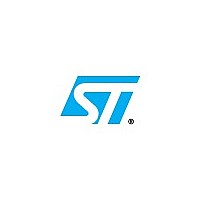ST92F150CV1 STMicroelectronics, ST92F150CV1 Datasheet - Page 252

ST92F150CV1
Manufacturer Part Number
ST92F150CV1
Description
8-bit MCU
Manufacturer
STMicroelectronics
Datasheet
1.ST92F150CR1.pdf
(429 pages)
Specifications of ST92F150CV1
Internal Memory
Single Voltage FLASH up to 256 Kbytes, RAM up to 8Kbytes, 1K byte E3 (Emulated EEPROM)
Minimum Instruction Time
83 ns (24 MHz int. clock)
Available stocks
Company
Part Number
Manufacturer
Quantity
Price
Company:
Part Number:
ST92F150CV1QB
Manufacturer:
STMicroelectronics
Quantity:
10 000
Part Number:
ST92F150CV1T3
Manufacturer:
ST
Quantity:
20 000
- Current page: 252 of 429
- Download datasheet (7Mb)
SERIAL PERIPHERAL INTERFACE (SPI)
SERIAL PERIPHERAL INTERFACE (Cont’d)
10.7.4 Functional Description
Figure 121
(SPI) block diagram.
This interface contains 4 dedicated registers:
Refer to the SPCR, SPPR, SPSR and SPDR reg-
isters in
10.7.4.1 Master Configuration
In a master configuration, the serial clock is gener-
ated on the SCK pin.
Procedure
252/429
9
– A Control Register (SPCR)
– A Prescaler Register (SPPR)
– A Status Register (SPSR)
– A Data Register (SPDR)
– Define the serial clock baud rate by setting/re-
– Select the CPOL and CPHA bits to define one
– The SS pin must be connected to a high level
– The MSTR and SPOE bits must be set (they
setting the DIV2 bit of SPPR register, by writ-
ing a prescaler value in the SPPR register and
programming the SPR0 & SPR1 bits in the
SPCR register.
of the four relationships between the data
transfer and the serial clock (see
signal during the complete byte transmit se-
quence.
remain set only if the SS pin is connected to a
high level signal).
Section
shows the serial peripheral interface
10.7.6for the bit definitions.
Figure
123).
In this configuration the MOSI pin is a data output
and the MISO pin is a data input.
Transmit Sequence
The transmit sequence begins when a byte is writ-
ten the SPDR register.
The data byte is parallel loaded into the 8-bit shift
register (from the internal bus) during a write cycle
and then shifted out serially to the MOSI pin most
significant bit first.
When data transfer is complete:
During the last clock cycle the SPIF bit is set, a
copy of the data byte received in the shift register
is moved to a buffer. When the SPDR register is
read, the SPI peripheral returns this buffered val-
ue.
Clearing the SPIF bit is performed by the following
software sequence:
1. An access to the SPSR register while the SPIF
2. A read of the SPDR register.
Note: While the SPIF bit is set, all writes to the
SPDR register are inhibited until the SPSR regis-
ter is read.
– The SPIF bit is set by hardware
– An interrupt is generated if the SPIS and SPIE
bit is set
bits are set.
Related parts for ST92F150CV1
Image
Part Number
Description
Manufacturer
Datasheet
Request
R

Part Number:
Description:
STMicroelectronics [RIPPLE-CARRY BINARY COUNTER/DIVIDERS]
Manufacturer:
STMicroelectronics
Datasheet:

Part Number:
Description:
STMicroelectronics [LIQUID-CRYSTAL DISPLAY DRIVERS]
Manufacturer:
STMicroelectronics
Datasheet:

Part Number:
Description:
BOARD EVAL FOR MEMS SENSORS
Manufacturer:
STMicroelectronics
Datasheet:

Part Number:
Description:
NPN TRANSISTOR POWER MODULE
Manufacturer:
STMicroelectronics
Datasheet:

Part Number:
Description:
TURBOSWITCH ULTRA-FAST HIGH VOLTAGE DIODE
Manufacturer:
STMicroelectronics
Datasheet:

Part Number:
Description:
Manufacturer:
STMicroelectronics
Datasheet:

Part Number:
Description:
DIODE / SCR MODULE
Manufacturer:
STMicroelectronics
Datasheet:

Part Number:
Description:
DIODE / SCR MODULE
Manufacturer:
STMicroelectronics
Datasheet:

Part Number:
Description:
Search -----> STE16N100
Manufacturer:
STMicroelectronics
Datasheet:

Part Number:
Description:
Search ---> STE53NA50
Manufacturer:
STMicroelectronics
Datasheet:

Part Number:
Description:
NPN Transistor Power Module
Manufacturer:
STMicroelectronics
Datasheet:

Part Number:
Description:
DIODE / SCR MODULE
Manufacturer:
STMicroelectronics
Datasheet:











